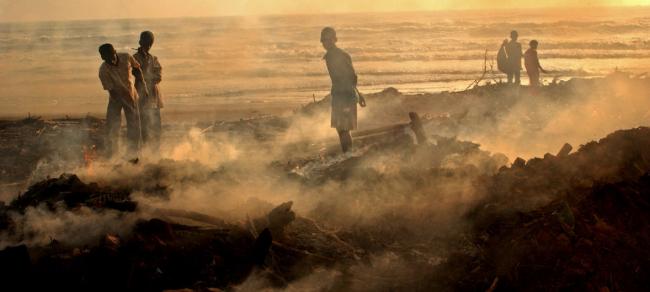
Disasters cost billions in agricultural losses, poor farmers bear brunt – UN report
New York, May 16 (JEN): A crowded field of threats that includes drought, floods, animal disease outbreaks and chemical spills are among the disasters costing farmers in the developing world billions of dollars each year, according to a new report from the United Nations agriculture agency.
“The agriculture sectors – which includes crop and livestock production as well as forestry, fisheries and aquaculture – face many risks, such as climate and market volatility, pests and diseases, extreme weather events, and an ever-increasing number of protracted crises and conflicts,” said José Graziano da Silva, Director-General of the Food and Agriculture Organization (FAO).
In collaboration with FAO, Viet Nam launched the report, 2017: The impact of disasters and crises on agriculture and food security, Thursday at a regional conference in Hanoi.
The report points out that between 2005 and 2015 natural disasters cost the agricultural sectors of developing country economies a staggering $96 billion in damaged or lost crop and livestock production, $48 billion of which occurred in Asia.
Drought, which has battered farmers globally, was one of the leading culprits.
FAO documented that 83 per cent of all drought-caused economic losses were absorbed by agriculture – to the tune of $29 billion.
“This has become the ‘new normal,’ and the impact of climate change will further exacerbate these threats and challenges,” Mr. da Silva warned.
The report also details how multiple other threats are taking a heavy toll on food production, food security, and people’s livelihoods.
“Disaster risk reduction and management must, therefore, become an integral part of modern agriculture,” stressed the FAO chief.
Disasters, natural and otherwise
While floods and storms had the largest impacts in Asia, their agricultural systems were also heavily affected by earthquakes, tsunamis and extreme temperatures.
For both Africa as well as for Latin America and the Caribbean, drought was the costliest disaster, resulting in crop and livestock losses of $10.7 and $13 billion, respectively, between 2005 and 2015.
African farmers notched up more than $6 billion in losses in that period from crop pests and animal diseases.
small island developing States are particularly vulnerable to tsunamis, earthquakes, storms and floods. Their economic losses from disasters jumped from $8.8 billion for the period 2000-2007 to over $14 billion between 2008-2015, the report shows.
The report also includes ‘food chain crises’ sparked by animal diseases, like Rift Valley Fever and also addressed conflict.
A first case study done on the impacts of conflict in Syria found that the overall financial cost of damage and loss in that country's agriculture sector over the 2011-2016 period was at least $16 billion.
All told, nearly a quarter of all financial losses caused by natural disasters between 2005 and 2015 were borne by the agricultural sector, according to FAO’s study.
Given the increasing scale and intensity of threats to agriculture, it is critical to develop adequate disaster and crisis governance structures, which must be grounded on data and evidence detailing the ways that disasters affect farmers and food producers, the report says.
“Building a more holistic and ambitious disaster-resilience framework for agriculture is crucial to ensuring sustainable development, which is a cornerstone for peace and the basis for adaptation to climate change,” concluded Mr. da Silva.
FAO/Ami Vitale
Support Our Journalism
We cannot do without you.. your contribution supports unbiased journalism
IBNS is not driven by any ism- not wokeism, not racism, not skewed secularism, not hyper right-wing or left liberal ideals, nor by any hardline religious beliefs or hyper nationalism. We want to serve you good old objective news, as they are. We do not judge or preach. We let people decide for themselves. We only try to present factual and well-sourced news.







